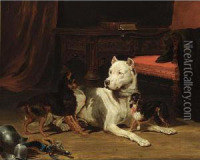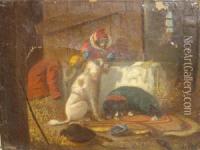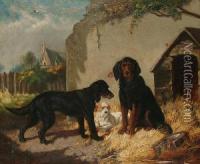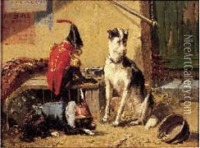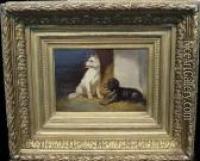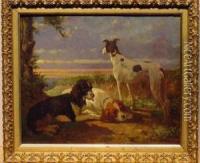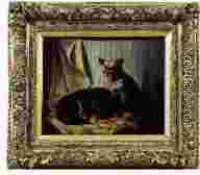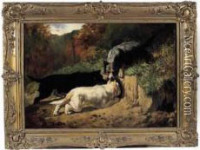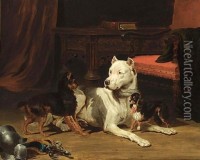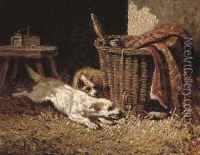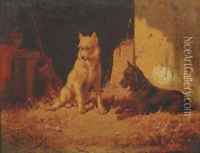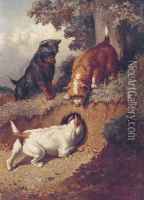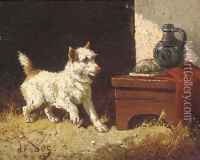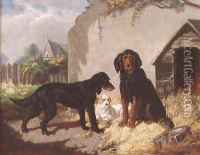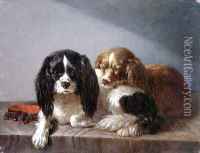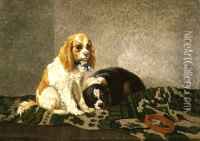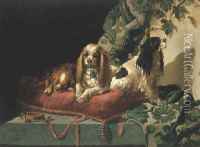Vincent de Vos Paintings
Vincent de Vos was a 19th-century Belgian painter known primarily for his animal paintings and genre scenes. Born on March 2, 1829, in Kortrijk, Belgium, he was part of a family of artists; his brothers, Julien and Alexander de Vos, were also painters. Vincent displayed an early talent for art and was trained by his older brother Julien, who was well-regarded for his own animal paintings.
De Vos enrolled at the Academy of Fine Arts in Kortrijk and later continued his studies in Antwerp, where he was influenced by the Flemish tradition of animal painting. His works often featured domestic animals, particularly dogs and farm animals, depicted with a high degree of realism and attention to detail. He was also known for his ability to capture the character and individuality of each animal subject, a skill that made his paintings popular among the Belgian bourgeoisie.
Throughout his career, Vincent de Vos exhibited his works at various salons and exhibitions, gaining recognition and accolades for his contribution to Belgian art. He became particularly well-known for a series of paintings featuring dogs, which were praised for their lifelike qualities and emotional resonance. In addition to animal paintings, de Vos also produced a number of genre scenes, landscapes, and historical paintings, though these were less prominent in his oeuvre.
Despite his success, Vincent de Vos's life was marked by personal challenges, and he struggled with financial difficulties. He continued to paint until his death on December 4, 1875, in Kortrijk. Today, his works are held in several Belgian museums and are considered important examples of 19th-century animal painting in Belgium. Vincent de Vos's legacy endures through his contribution to the genre and his influence on subsequent generations of animal painters.

